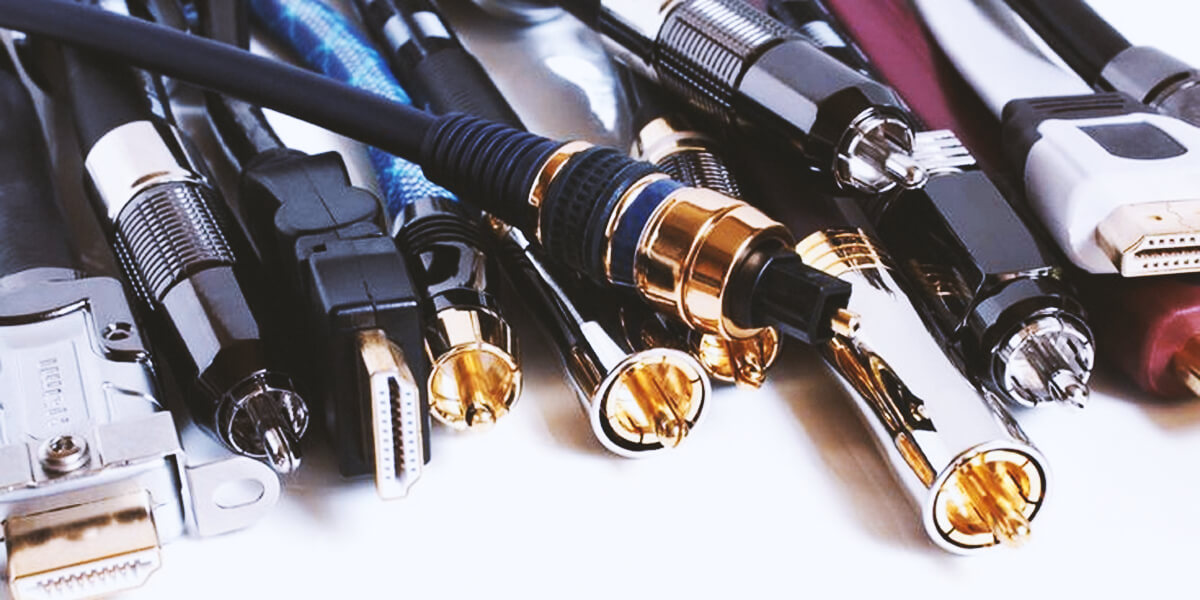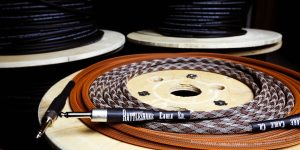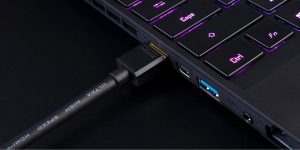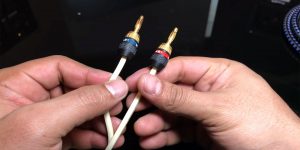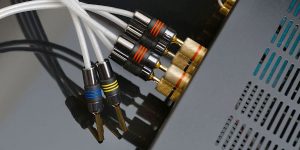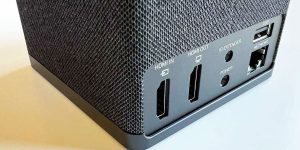If you are a true audiophile or just about to become one, you have probably already been faced with identifying audio cable types. It can be a real problem when you get confused by all the different types, buying them all in a row without thinking whether you need one. In addition, a lot of them are interchangeable. So I see how you’re disheveled, sitting in the middle of the room, wrapped in a web of wires with an absolutely confused look. To avoid this, I have prepared an audio cable connection guide describing what types of audio cables exist, where they are used, and their nuances. Thumbs up, and let’s go!
Difference between analog and digital cables
Before proceeding to a detailed review of speaker cable types, it is necessary to understand the main subspecies: analog and digital. Essentially, the opposition “analog vs. digital” cable is that analog cables use electricity to transmit the signal, and digital cables use binary code (bit pattern). Thus, the first type is considered “natural sounding,” realistic, and warm but has more noise. On the other hand, a digital audio cable operates with virtually no signal discontinuity, so the sound quality is higher and cleaner. At the same time, the connection of analog cables is seamless. In contrast, digital cables exist in great variety, and all of them, keeping up with the times, are constantly changing the ways of connection.
As you can see, each kind has advantages and disadvantages, but in the end, only you can decide what you need.
Balanced vs unbalanced cables
In turn, analog cables are divided into balanced and unbalanced. The difference between them is that balanced cables are designed to reduce interference and external noise in the signal. So if you want to use this type of signal transmission, ensure all links in the chain (output, input, and cable) are appropriate. Otherwise, you will get unbalanced results. For example, electric musical instruments (synthesizer, guitar) produce an unbalanced sound, and there is simply no point in using a balanced cable. If for some reason, you do want to convert an unbalanced signal into a balanced one, you can use external converters, but they are usually very expensive. The reconciling point in the confrontation of balanced vs. unbalanced cables is that if you use short wires, the difference just won’t be noticeable because the longer the cable, the more interference it is exposed to. That is, balanced cables are more important the longer they are.
Audio cable shielding

The job of an audio cable is to carry the audio signal from the output to the input, but it is often subject to unwanted noise. Audio cable shielding is additional protection against external noise, which literally protects the conductors (cores). Performing, in fact, the function of grounding the signal, they are often made of copper, which is considered the better conductor today. Below I will tell you about a few of them to make it easier for you to decide on your choice, which in the end, will depend on what purpose you have set for your cable.
Braided shield
As you can understand from the name, this is the braiding of the main conductor using copper threads. The coverage area of such protection is very high, ranging from 50 to over 90%, and uniform. Another advantage of the Braided shield is its effectiveness for short radio waves, literally blocking the signals of radio frequency interference sources. These are the main advantages of this type of protection over others.
The disadvantage of cables with this type of protection is their flexibility. Bends and twists hurt them, quickly bringing them into disrepair. So if you are interested in active use of the cable, it is better to consider another type of shielding. In addition, because of the complex manufacturing technology, this type of protection makes cables more expensive than others.
We can conclude that cables with a Braided shield are better suited for studio work, where all equipment is permanently located.
Spiral-wrapped shield
The material and construction of the Spiral-wrapped shield, or as it is often called – Serve shield, is the same as that of the Braided shield. The difference is in the winding method. In this case, we are dealing with the spiral method, which is clear from the name, wrapped around the main conductor in one direction.
The resulting advantage is flexibility and lower cost. And the disadvantages are less effective protection against external interference and a permanent reduction in shielding capabilities for use. Although to be fair, it must be said that their overall lifespan is longer.
Thus, cables with this type of protection are suitable for active use, for example, for electric guitarists, especially on stage, when they are especially in the heat.
Foil shielding
Foil shielding cables are lightweight and sold at a low price. The material used is a thin layer of aluminum foil and mylar backing on the copper drain line, wrapped 100% around the main conductor. The efficiency of this design is very high, even at high frequencies. Therefore, this protection method is most often found in digital audio or multicore cables. But this method of winding and materials also played a negative role. Wear and flexibility suffered because of the copper substrate, so they are also more suitable for stationary use.
Types of audio cables
Analog connectors
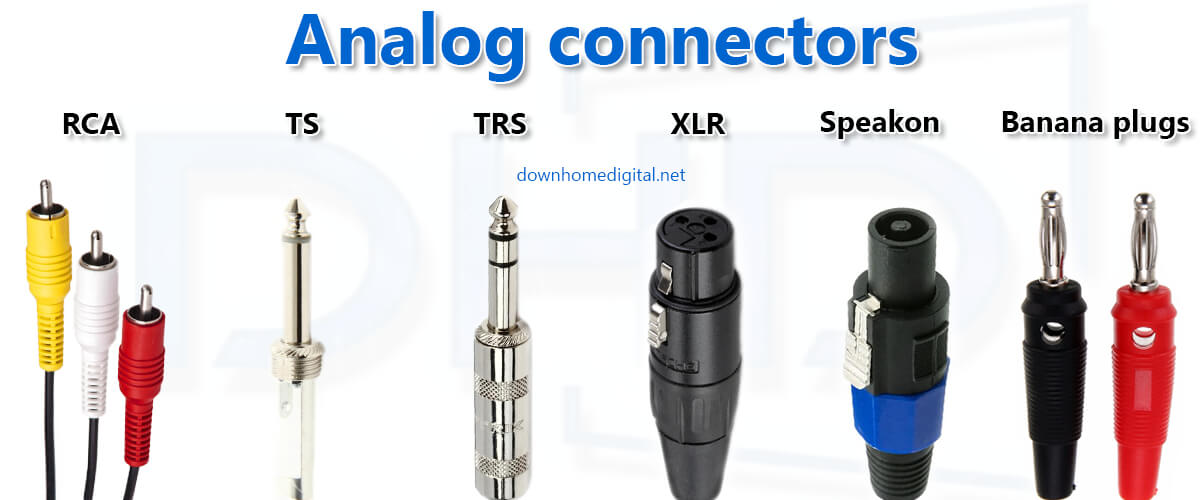
RCA cables
The cable gets its name from the manufacturer’s abbreviation, The Radio Corporation of America. These cables are most often found with true audiophiles because these two-channel cables are designed to connect vinyl turntables, which is why they are sometimes called phono plugs or aux cords. However, they are also used for other analog equipment. RCA cable is an unbalanced, usually very short cable with two connectors in red and white (for ease of connection, inputs on equipment are also colored). Of course, now there is a wireless connection or digital cables, but connoisseurs of realistic analog sound will not trade the usual RCA for any of them.
TS cables
TS (Tip/Sleeve) spirit wire unbalanced cable, and therefore most often short. It is designed to connect single-channel (monaural) sound sources, particularly effects pedals or drum machines, but most often guitars (that is why it is called a guitar amp cord) to amplifiers, audio interfaces, or mixers.
The only black stripe in the middle of the metal connector will help you distinguish it from similar cables. Popular TS cable connectors are 1/4 inch, which has better shielding, or 1/8 inch, designed for monaural headphones.
TRS cables
The TRS (Tip/Ring/Sleeve Cable) is the same as the previous TS and can be distinguished by the number of black rings in the middle of the connector. As already mentioned, the TS has one, and the TRS has two. But the main difference of TRS is that you can set it to transmit two-channel stereo sound (separating for left and right channels) as unbalanced or use it as balanced for mono instruments (with positive, negative, and ground wire). Also, like the previous type, there are two sizes, 1/4 inch and 1/8 inch, where a quarter-inch cable is used for instruments, mixers, and studio monitors, and the smaller cable is used for headphones.
Here we can also mention the third type of TRRS (Tip/Ring/Ring/Sleeve), differentiated by three rings in the connector. And if you contrast TRS vs. TRRS, a microphone channel is added. This type is usually used for headsets or headphones with a built-in controller to separate the microphone sound.
XLR cables
The balanced, three-pin, and probably most popular XLR cable, popularly known as a microphone cable, is used for mixers, preamps, microphones, speakers, and even stage lights. And, of course, this implies a long cable length (approximately 6 to 50 feet).
It is a pro cable. Its connectors have locking features that make it impossible to disconnect, even if you accidentally yank it (for example, if you don’t consider walking around the stage with a microphone). They’re also rugged, so they belong at your gig. Another feature of the XLR cable is the two different types of connectors, which means that if you need to extend the cable length, you can connect them to the other to the right length. There are also XLR to TS, TRS, and RCA adapters today.
Speakon cables
Another professional cable for audio equipment (speakers and amplifiers) with a special connector from Neutrik, also called Speakon Connector. It is an unbalanced two-conductor wire (sometimes even with 4 or 8 conductors for high-powered configurations or bi-amping). They are often used specifically at live performances as an alternative to 1/4-inch acoustic cables because they can lock as XLR cables and not be confused with instrument cables or balanced XLR cables.
Banana plugs
Last on my list of types of audio cable connectors is a popular one, similar in size to TS but with different connectors. They are more of a home use for connecting speakers to AV receivers (amplifiers). As an alternative to connecting bare copper wire, banana plugs are neater.
Digital connectors
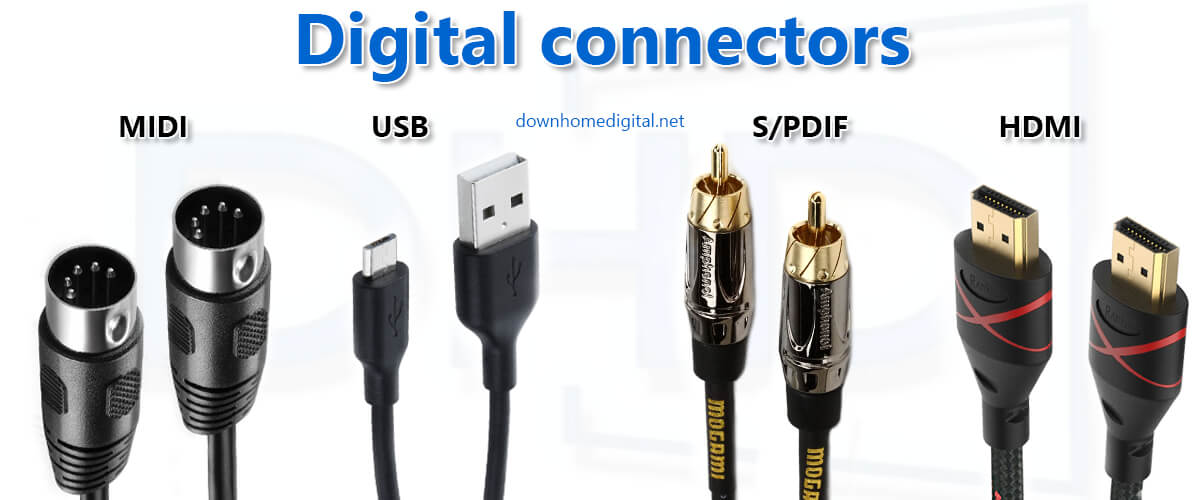
MIDI cables
It is the oldest configuration (used since the 1980s) that is still used today. It has five connection pins and looks like an XLR cable. Today their alternative is USB cables, but since quality equipment does not fail for many years, using MIDI is still relevant for synthesizers and other audio equipment. And its main advantage is the ability to transmit up to 16 channels of information.
USB cables
The most recognizable, extremely popular, and simple USB cable – used to connect devices, including audio interface), transfer digital data (audio signals) to the computer, and power. And also, as previously mentioned, it replaced the MIDI connector in the modern world (to connect musical instruments); that is, you can transmit multiple audio channels simultaneously.
Today USB cables are divided into subtypes USB Type-A, USB Type-B, USB Type-C, FireWire400, and Thunderbolt, which differ in transfer rates and depend on the type of audio interface used.
For example, USB Type-C is most often used as a replacement for the 3.5mm headphone (telephone) jack. On the other hand, FireWire – has a higher data transfer rate and is therefore used in studio equipment. And Thunderbolt is the most expensive and high-speed cable.
S/PDIF cables
The standard S/PDIF (Sony/Philips Digital Audio Interface) cables are used for AV systems, game consoles, and TVs. They can be divided into two types coaxial digital audio cable, called RCA, and digital optical audio cable, called Toslink (most often used to connect a TV or soundbar). Today they are considered obsolete and have been replaced by HDMI cables. But since many people have kept quality equipment for decades, they can come in handy for connecting it to your system. Or maybe your receiver doesn’t have enough HDMI connectors; S/PDIF is useful in that case too, but with audio loss (compression) for the latest audio formats.
HDMI cables
Also, one of the most popular audio cables today has three types (HDMI, Mini HDMI, and Micro HDMI), which differ in size, number of pins, connector type, and maximum transfer rate, and you can read more about them in this article.
The main thing that has happened with HDMI since version 1.4 was the addition of the Audio Return Channel (ARC, and later the more advanced e ARC), which reduces the number of connections between the TV and other devices (AV receiver or soundbar) and allows lossless transmission of the latest audio formats.
ADAT cables
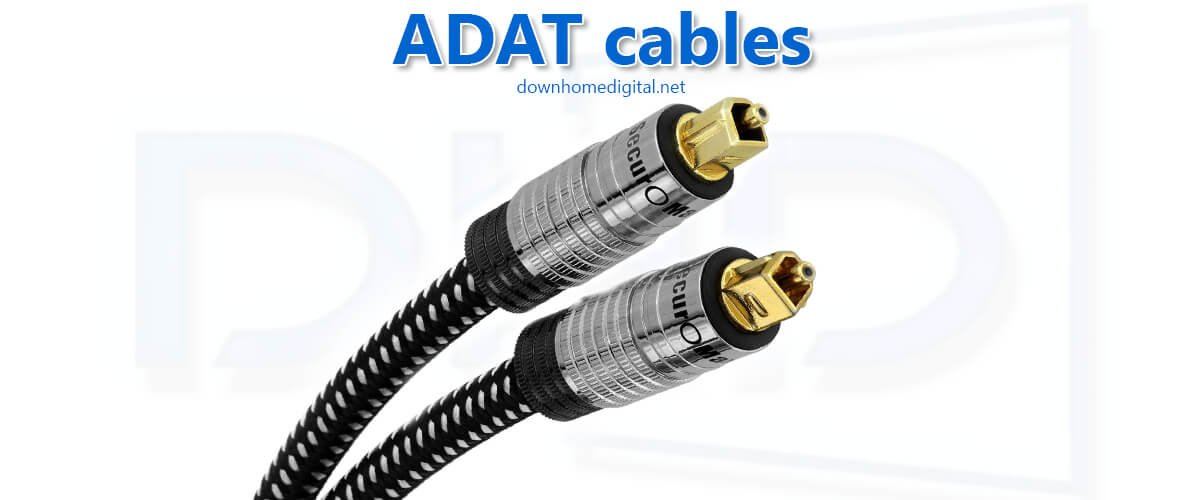
ADAT cables use the same connectors as S/PDI but with a different protocol. Thus, it can transmit up to 8 channels (with 48 kHz / 24-bit quality) and serves to connect two devices with digital compatibility. It means that both devices must be synchronized, in other words, set to the same beat before connecting; otherwise, you will hear clicks and crackles. With this cable, you can expand your studio setup rather than swap out your equipment for one with more inputs. Today you can find ADAT ports in almost any interface.
Dante
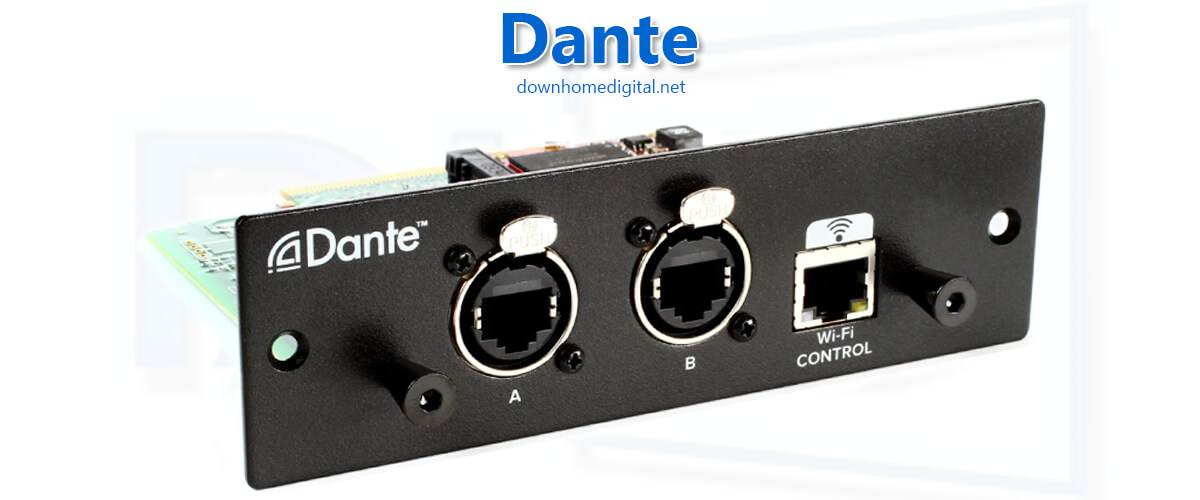
The Dante digital protocol uses conventional CAT-5 or CAT-6 ethernet cables to transmit audio streams. Today it is already a standard for live audio with the ability to transmit up to 256 channels over one single cable. Dante is used in many interfaces because of the availability of ethernet connectors in computers and venues to connect stage boxes to a digital mixer.
FAQ
What gauge wire is best for audio?
Is mono better for vocals?
But, on the other hand, you need to understand what kind of sound you want to get as a result. So for recording two or more vocals, stereo recording is usually used. Mono is also used to record some musical instruments.
Which sounds better: wired or wireless connection?
While improving over the years as transmission quality improves, a wireless connection does not provide full signal transmission. On the other hand, when you use Bluetooth, you are not tied to a sound source with a wire (if we are talking about headphones). But the main thing to know is that the wireless connection always digitizes the sound, so if you want to enjoy an analog one, you should only use a wired connection.

